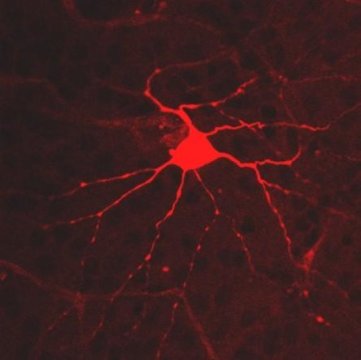[ad_1]
Scientists at Johns Hopkins Medicine say they have identified what may be an ancient light-sensing mechanism in modern mouse retinal cells.
“Some evolutionary biologists have proposed that ancient organisms may have had two separate light-response mechanisms that coexisted in a single photoreceptor, and through evolution, these two mechanisms separated into different cell types. Our research seems to provide evidence that photoreceptors containing both light-sensing mechanisms may still exist in modern mammals,” says King-Wai Yau, Ph.D., a professor of neuroscience at the Johns Hopkins University School of Medicine. In a report of their experiments in mice published Oct. 18 in Cell, the scientists say they focused their research on light-sensing cells that govern so-called “non-image forming” vision.
“When we think about vision, we tend to associate it with seeing an image, such as a person’s face. But light also has other effects, such as making our pupils constrict in bright light to limit its intensity on our retina or helping us overcome jet lag when traveling across time zones,” says Yau, who also is a professor of ophthalmology at Johns Hopkins Wilmer Eye Institute.
Such non-image forming vision, Yau says, is controlled by a subgroup of ganglion cells that reside in the retina of many, most likely all, mammals, including humans. These cells, called intrinsically photosensitive retinal ganglion cells (ipRGCs), are photoreceptors, much like the more familiar rods and cones, and there are five subtypes of them, M1 through M5.
In a bid to understand the biochemical pathway that ipRGCs use to respond to light, Yau and his colleagues first looked to the anatomy of other photoreceptors.
Most photoreceptors have either a kind of tail called cilium or a tufted protrusion called microvilli. The photoreceptors that sport a cilium or cilia on their surface use an intracellular chemical called cyclic nucleotide to respond to light. Other photoreceptors that are speckled with microvilli use, instead, an enzyme called phospholipase C to respond to light. Until now, the two pathways had not been found to coexist in a single photoreceptor.
It turns out that ipRGCs have no cilia or microvilli, so scientists had no anatomical clue to which pathway they use to respond to light. But in research published in 2011 by Yau’s team, they found that the M1 subtype of ipRGCs uses the phospholipase C pathway.
For the current work, Yau and his team focused on subtypes M2 and M4 of ipRGCs to determine if they used the same biochemical pathway as M1 cells.
To do this, the Johns Hopkins scientists genetically engineered mice to remove molecular components in the phospholipase C pathway. If M2 and M4 cells also used the phospholipase C pathway, disrupting the pathway would hamper the cells’ ability to respond to light.
No matter how the scientists disrupted the phospholipase C pathway, however, M4 cells still responded to light without a reduction in the size of response, and M2 cells responded by about half as much as control mice. So, M2 cells seem to use, in part, the phospholipase C pathway, but M4 cells hardly use it.
“That prompted us to search for an alternative pathway the cells might be using,” says Zheng Jiang, Ph.D., a research associate who works in Yau’s laboratory.
In their search, according to Jiang, they found one biochemical pathway involving HCN channels, that, when disrupted, almost completely blocked the intrinsic light response in M4 cells and partly blocked it in M2 cells. Thus, M2 cells were using both the phospholipase C and the newly found HCN-channel pathway, and M4 cells seemed to mostly use the HCN pathway.
HCN channels, which stands for hyperpolarization-activated and cyclic nucleotide-gated channel, are found also in mammalian heart cells, acting as a pacemaker to set heart rate.
The observation that M2 cells use two biochemical pathways for light response suggests a primordial link, say the researchers, harkening back to the proposal by evolutionary biologists that the earliest photoreceptor may contain both mechanisms in the same cell.
Yau says this phenomenon likely exists in the retinas of humans, as well.
[ad_2]















